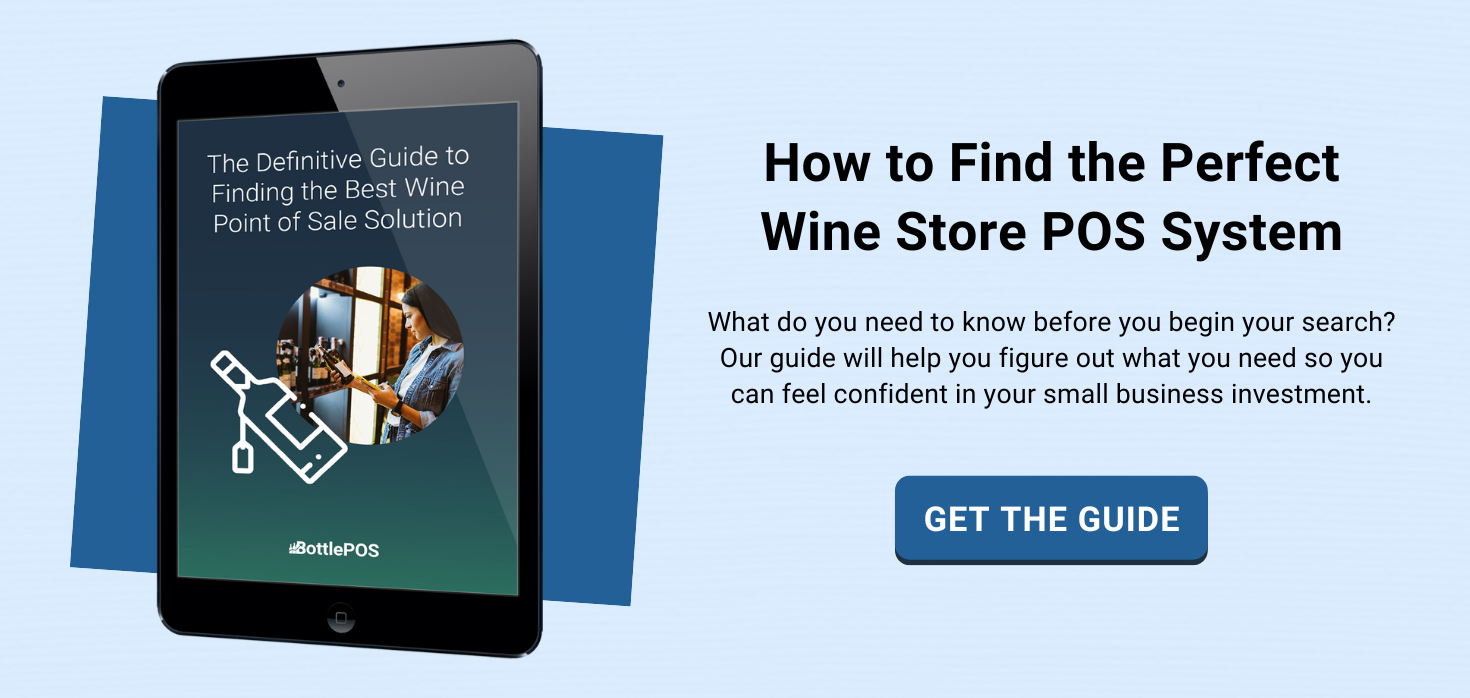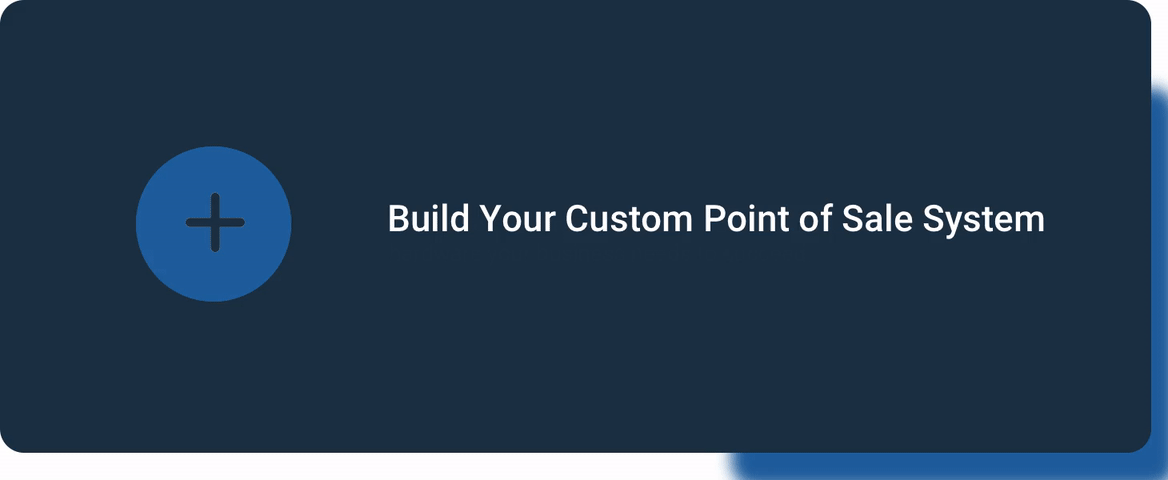If you want to grow your business, you need to invest in a slew of new tools and tactics, right?
Not necessarily.
You’ve invested time, care, and money into your liquor store. Now you’re ready to take things to the next level, but you’re not sure where to start.
Without the right point of sale data at your fingertips, you're flying blind. But with the right point of sale (POS) analytics, you can access the insights you need to grow your business.
This post covers seven creative ways to harness your point of sale analytics.
We will:
- Dive into the details of data-driven decision making
- Show you how to extract meaningful insights that can guide your business strategies
- Show how to identify your most profitable products
- Discuss prize optimization strategies and
- Cover how to tailor promotions to specific customer segments with these actionable insights!
Why Utilize Point of Sale Analytics?
Before we get started with our list of ways you can use point of sale analytics to grow your store, let’s establish some baseline information.
First: What are point of sale analytics? Simply put, these analytics are data pulled from your point of sale system, such as sales data, customer insights, and more.
Point of sale analytics play a significant role in business operations by providing valuable insights into sales, customer behavior, and overall business performance. Utilizing POS analytics can greatly benefit liquor store owners in various ways.
One key benefit relates to sales performance analysis. By leveraging POS analytics, you can track and analyze sales trends, identifying which products are top-sellers and understanding their popularity among customers. This information helps you make data-driven decisions regarding inventory management, pricing strategies, and liquor store promotion efforts.
Additionally, POS analytics enable you to measure the effectiveness of your marketing strategies by evaluating their impact on sales and customer engagement.
Understanding customer behavior is another valuable piece of the point of sale analytics puzzle. This data gives you insights into customer preferences, buying patterns, and demographics. Analyzing customer behavior allows you to personalize your marketing efforts.
Lastly, you can use your analytics to optimize inventory management. By analyzing sales data and inventory levels, you can make informed decisions regarding stock replenishment, preventing overstocking or running out of stock.
POS analytics helps you identify slow-moving products and adjust your inventory accordingly, minimizing waste and maximizing efficiency. Furthermore, you can use inventory turnover data to streamline your supply chain operations, ensuring you have the right products at the right time.
Ready to start experiencing these benefits? Excellent! Let’s dive into our list of creative ways to use these analytics to grow your store.

1. Segment Your Customer Base
Our first tip for using POS analytics to grow your store is to segment your customer base. Use point of sale data like purchasing behavior, patterns, and customer demographics to study your customers.
Separate your customers into categories that allow you to tailor marketing campaigns, promotions, and messaging to each segment. This targeted approach allows you to deliver personalized messaging and offers that resonate with your customers, increasing their engagement and, ultimately, driving more sales.
Related Read: 4 Ideas To Attract New Liquor Store Customers
Whether you’re creating special promotions for your high-spending customers or recommending products based on consistent buyers’ preferences, leveraging POS analytics to segment your customer base helps you build stronger relationships and enhance customer satisfaction.
2. Optimize Your Loyalty Program
If you’re looking to grow your store, chances are you already have customer loyalty programs in place. Your point of sale data can help you make the most of these programs by giving you the power to optimize them for success!
Dive into data on program participation, reward redemption rates, and customer behavior to identify areas for improvement. Analyze which incentives or rewards drive the highest engagement and adjust your loyalty program accordingly.
Optimizing your loyalty program with the help of POS analytics can help you increase customer retention, encourage repeat visits, and boost overall spending, all while showing your most loyal customers you care about their needs and interests.
3. Discover Upsell and Cross-Sell Opportunities
Which products are the best candidates for upselling opportunities? Which can you bundle together for a cross-sell? POS analytics can get you the answers to these questions!
Analyze purchase patterns and customer behavior to identify which products are frequently purchased together or which products have higher profit margins. Train your staff to recognize these opportunities and provide personalized recommendations to customers, guiding them towards additional purchases.
Related Read: The 6 Best Alcohol Marketing Strategies to Implement for Your Liquor Store Right Now
For example, if a customer buys a bottle of premium whiskey, your staff can suggest accompanying high-end glasses or a selection of premium mixers. These upsell and cross-sell strategies, backed by insights from POS analytics, can increase the dollar value of the average sale and boost your bottom line.
4. Optimize Inventory and Pricing
You can also use point of sale analytics to improve your liquor store inventory management and pricing strategies.
Analyze sales data to identify fast-moving and slow-moving products, seasonal trends, and popular brands. With this information, you can make data-driven purchasing decisions, ensuring you stock the right quantities of high-demand items while minimizing excess inventory.
Optimizing inventory management in this way helps you reduce carrying costs while also minimizing your risk of running out of stock of top sellers.
You can also experiment with dynamic pricing, bundle pricing, or limited-time promotions based on insights from POS analytics. By evaluating the performance of different pricing strategies, you can optimize your pricing approach to maximize profits while staying competitive.
5. Improve Staff Performance
POS analytics don’t stop at sales and inventory — you can also use them to analyze and improve staff performance.
Take a look at individual sales data, average transaction value, customer satisfaction ratings, and any other metrics your point of sale system tracks to evaluate your team’s effectiveness.
Use point of sale data to identify top-performing employees and recognize their efforts. Rewarding high performers can motivate those employees further and show the rest of your staff what they should do to excel.
On the flip side, you can analyze POS data to pinpoint challenges or areas of improvement. Then, provide targeted training to your staff to address these issues and improve performance. Well-trained and motivated employees provide your customers with a better experience, which can boost your store’s success.
Related Read: 3 Ways Your POS Helps Identify Employee Theft
6. Identify Future Trends
Harness the power of POS analytics to identify emerging trends in customer preferences, popular product categories, or purchase patterns.
Analyzing your sales and customer data can help you keep your finger on the pulse of changing market dynamics. You can then adjust your product offerings or marketing strategies to fit your customers’ needs.
For example, if you notice a rising demand for craft beers or a shift towards finer wines, you can proactively stock those items and tailor your marketing campaigns to target customers interested in these trends.
Being proactive and responsive to evolving customer preferences will help you attract new customers, stay ahead of competitors, and keep up with the times in the ever-shifting liquor market.
7. Optimize Operations
Last but not least, you can use point of sale analytics to optimize your large-scale operational processes. Do you know where the bottlenecks or inefficiencies are in your store’s operations? Your POS data does!
Look for delays, long wait times, order errors, and more. Then, make adjustments to streamline those processes to improve your customers’ experience.
For example, if you notice high traffic during certain hours, reorganize staff schedules or add an additional point of sale terminal to reduce customer wait times. If a certain supplier’s shipments are always delayed, perhaps seek new terms with that supplier or find a new, more reliable supplier altogether.
These insights from your POS analytics help you fine-tune your operations, ensuring smooth and efficient workflows that keep customers smiling and coming back to your store.

Grow Your Liquor Store with Point of Sale Analytics
Point of sale analytics can help you run your store more smoothly and give you the data you need to make better decisions for the day-to-day operations of your business. However, the benefits of this powerful data doesn’t stop there!
With the right analytics and reporting tools, you can take your business to the next level, expanding to a larger inventory, a bigger market, or even multiple store locations.
Without this data, however, you’ll always be playing catch-up, struggling to keep up with changing trends and customer needs.
How can you get the most out of your point of sale analytics? Invest in a POS solution with built-in reporting capabilities that will provide you with all the data you need for your liquor store!
Bottle POS was built for liquor stores. Our solution offers custom and built-in reporting features that can help you confidently grow your store.
Request a free demo today to see if Bottle POS is the right solution for you!